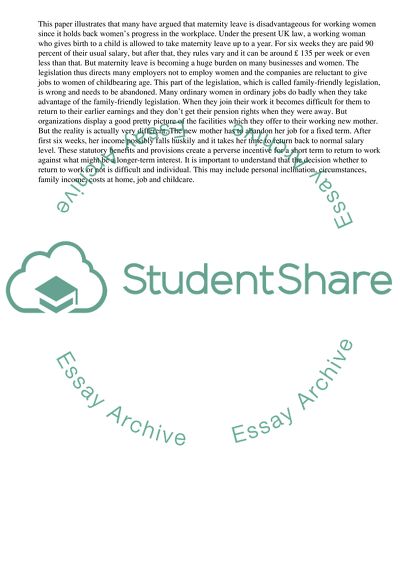Cite this document
(“The Requirement for Employers to Allow Maternity Leave under United Essay”, n.d.)
The Requirement for Employers to Allow Maternity Leave under United Essay. Retrieved from https://studentshare.org/management/1636455-the-requirement-for-employers-to-allow-maternity-leave-under-united-kingdom-law-is-a-disadvantage-to-women-in-the-workplace-discuss-this-statement
The Requirement for Employers to Allow Maternity Leave under United Essay. Retrieved from https://studentshare.org/management/1636455-the-requirement-for-employers-to-allow-maternity-leave-under-united-kingdom-law-is-a-disadvantage-to-women-in-the-workplace-discuss-this-statement
(The Requirement for Employers to Allow Maternity Leave under United Essay)
The Requirement for Employers to Allow Maternity Leave under United Essay. https://studentshare.org/management/1636455-the-requirement-for-employers-to-allow-maternity-leave-under-united-kingdom-law-is-a-disadvantage-to-women-in-the-workplace-discuss-this-statement.
The Requirement for Employers to Allow Maternity Leave under United Essay. https://studentshare.org/management/1636455-the-requirement-for-employers-to-allow-maternity-leave-under-united-kingdom-law-is-a-disadvantage-to-women-in-the-workplace-discuss-this-statement.
“The Requirement for Employers to Allow Maternity Leave under United Essay”, n.d. https://studentshare.org/management/1636455-the-requirement-for-employers-to-allow-maternity-leave-under-united-kingdom-law-is-a-disadvantage-to-women-in-the-workplace-discuss-this-statement.


